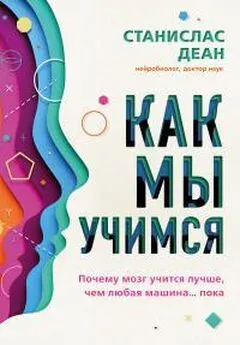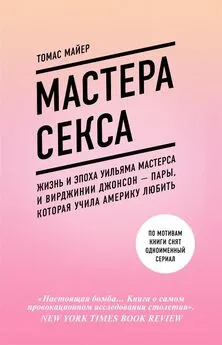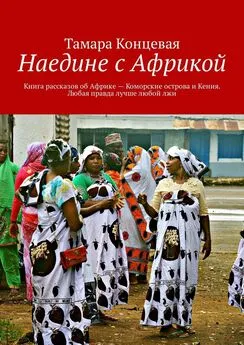Станислас Деан - Как мы учимся. Почему мозг учится лучше, чем любая машина… пока
- Название:Как мы учимся. Почему мозг учится лучше, чем любая машина… пока
- Автор:
- Жанр:
- Издательство:Эксмо
- Год:2021
- Город:Москва
- ISBN:978-5-04-113024-4
- Рейтинг:
- Избранное:Добавить в избранное
-
Отзывы:
-
Ваша оценка:
Станислас Деан - Как мы учимся. Почему мозг учится лучше, чем любая машина… пока краткое содержание
В формате PDF A4 сохранен издательский макет.
Как мы учимся. Почему мозг учится лучше, чем любая машина… пока - читать онлайн бесплатно ознакомительный отрывок
Интервал:
Закладка:
Rankin, C. H. (2004). Invertebrate learning: What can’t a worm learn? Current Biology , 14(15), R617–R618.
Rasch, B., Büchel, C., Gais, S., & Born, J. (2007). Odor cues during slow-wave sleep prompt declarative memory consolidation. Science , 315(5817), 1426–1429.
Rasmussen, A., Jirenhed, D. A., & Hesslow, G. (2008). Simple and complex spike firing patterns in Purkinje cells during classical conditioning. Cerebellum , 7(4), 563–566.
Rattan, A., Savani, K., Chugh, D., & Dweck, C. S. (2015). Leveraging mindsets to promote academic achievement: Policy recommendations. Perspectives on Psychological Science , 10(6), 721–726.
Reich, L., Szwed, M., Cohen, L., & Amedi, A. (2011). A ventral visual stream reading center independent of visual experience. Current Biology , 21(5), 363–368.
Reid, V. M., Dunn, K., Young, R. J., Amu, J., Donovan, T., & Reissland, N. (2017). The human fetus preferentially engages with face-like visual stimuli. Current Biology , 27(12), 1825–1828.
Rescorla, R. A., & Wagner, A. R. (1972). A theory of Pavlovian conditioning: Variations in the effectiveness of reinforcement and nonreinforcement. // A. H. Black & W. F. Prokasy (Eds.), Classical conditioning II: Current research and theory (pp. 64–99). New York, NY: Appleton-Century-Crofts.
Ribeiro, S., Goyal, V., Mello, C. V., & Pavlides, C. (1999). Brain gene expression during REM sleep depends on prior waking experience. Learning and Memory , 6(5), 500–508.
Ritchie, S. J., & Tucker-Drob, E. M. (2018). How much does education improve intelligence? A meta-analysis. Psychological Science , 29(8), 1358–1369.
Rivera, S. M., Reiss, A. L., Eckert, M. A., & Menon, V. (2005). Developmental changes in mental arithmetic: Evidence for increased functional specialization in the left inferior parietal cortex. Cerebral Cortex, 15(11), 1779–1790.
Robey, A. M., Dougherty, M. R., & Buttaccio, D. R. (2017). Making retrospective confidence judgments improves learners’ ability to decide what not to study. Psychological Science , 28(11), 1683–1693.
Roediger, H. L., & Karpicke, J. D. (2006). Test-enhanced learning: Taking memory tests improves long-term retention. Psychological Science , 17(3), 249–255.
Rohrer, D., & Taylor, K. (2006). The effects of overlearning and distributed practise on the retention of mathematics knowledge. Applied Cognitive Psychology , 20(9), 1209–1224.
Rohrer, D., & Taylor, K. (2007). The shuffling of mathematics problems improves learning. Instructional Science , 35(6), 481–498.
Romeo, R. R., Leonard, J. A., Robinson, S. T., West, M. R., Mackey, A. P., Rowe, M. L., & Gabrieli, J. D. E. (2018). Beyond the 30-million-word gap: Children’s conversational exposure is associated with language-related brain function. Psychological Science , 29(5), 700–710.
Rouault, M., & Koechlin, E. (2018). Prefrontal function and cognitive control: From action to language. Current Opinion in Behavioral Sciences , 21, 106–111.
Rudoy, J. D., Voss, J. L., Westerberg, C. E., & Paller, K. A. (2009). Strengthening individual memories by reactivating them during sleep. Science , 326(5956), 1079.
Rueckl, J. G., Paz-Alonso, P. M., Molfese, P. J., Kuo, W.-J., Bick, A., Frost, S. J., Frost, R. (2015). Universal brain signature of proficient reading: Evidence from four contrasting languages. Proceedings of the National Academy of Sciences , 112(50), 15510–15515.
Rueda, M. R., Rothbart, M. K., McCandliss, B. D., Saccomanno, L., & Posner, M. I. (2005). Training, maturation, and genetic influences on the development of executive attention. Proceedings of the National Academy of Sciences , 102(41), 14931–14936.
Rugani, R., Fontanari, L., Simoni, E., Regolin, L., & Vallortigara, G. (2009). Arithmetic in newborn chicks. Proceedings of the Royal Society B: Biological Sciences , 276(1666), 2451–2460.
Rugani, R., Vallortigara, G., Priftis, K., & Regolin, L. (2015). Number-space mapping in the newborn chick resembles humans’ mental number line. Science , 347(6221), 534–536.
Sabbah, N., Authié, C. N., Sanda, N., Mohand-Saïd, S., Sahel, J.-A., Safran, A. B., Amedi, A. (2016). Increased functional connectivity between language and visually deprived areas in late and partial blindness. NeuroImage , 136, 162–173.
Sackur, J., & Dehaene, S. (2009). The cognitive architecture for chaining of two mental operations. Cognition , 111(2), 187–211.
Sadtler, P. T., Quick, K. M., Golub, M. D., Chase, S. M., Ryu, S. I., Tyler-Kabara, E. C., Batista, A. P. (2014). Neural constraints on learning. Nature , 512(7515), 423–426.
Saffran, J. R., Aslin, R. N., & Newport, E. L. (1996). Statistical learning by 8-month-old infants. Science , 274(5294), 1926–1928.
Sakai, T., Mikami, A., Tomonaga, M., Matsui, M., Suzuki, J., Hamada, Y., … Matsuzawa, T. (2011). Differential prefrontal white matter development in chimpanzees and humans. Current Biology , 21(16), 1397–1402.
Salimpoor, V. N., van den Bosch, I., Kovacevic, N., McIntosh, A. R., Dagher, A., & Zatorre, R. J. (2013). Interactions between the nucleus accumbens and auditory cortices predict music reward value. Science , 340(6129), 216–219.
Samson, D. R., & Nunn, C. L. (2015). Sleep intensity and the evolution of human cognition. Evolutionary Anthropology , 24(6), 225–237.
Sangrigoli, S., Pallier, C., Argenti, A.-M., Ventureyra, V. A. G., & de Schonen, S. (2005). Reversibility of the other-race effect in face recognition during childhood. Psychological Science , 16(6), 440–444.
Saygin, Z. M., Norton, E. S., Osher, D. E., Beach, S. D., Cyr, A. B., Ozernov-Palchik, O., Gabrieli, J. D. E. (2013). Tracking the roots of reading ability: White matter volume and integrity correlate with phonological awareness in prereading and early-reading kindergarten children. Journal of Neuroscience , 33(33), 13251–13258.
Saygin, Z. M., Osher, D. E., Koldewyn, K., Reynolds, G., Gabrieli, J. D., & Saxe, R. R. (2012). Anatomical connectivity patterns predict face selectivity in the fusiform gyrus. Nature Neuroscience, 15(2), 321–327.
Saygin, Z. M., Osher, D. E., Norton, E. S., Youssoufian, D. A., Beach, S. D., Feather, J., Kanwisher, N. (2016). Connectivity precedes function in the development of the visual word form area. Nature Neuroscience , 19(9), 1250–1255.
Schapiro, A. C., Turk-Browne, N. B., Norman, K. A., & Botvinick, M. M. (2016). Statistical learning of temporal community structure in the hippocampus. Hippocampus , 26(1), 3–8.
Schlaug, G., Jancke, L., Huang, Y., Staiger, J. F., & Steinmetz, H. (1995). Increased corpus callosum size in musicians. Neuropsychologia , 33(8), 1047–1055.
Schmidt, R. A., & Bjork, R. A. (1992). New conceptualizations of practice: Common principles in three paradigms suggest new concepts for training. Psychological Science , 3(4), 207–217.
Schoenemann, P. T., Sheehan, M. J., & Glotzer, L. D. (2005). Prefrontal white matter volume is disproportionately larger in humans than in other primates. Nature Neuroscience , 8(2), 242–252.
Schultz, W., Dayan, P., & Montague, P. R. (1997). A neural substrate of prediction and reward. Science , 275(5306), 1593–1599.
Schweinhart, L. J. (1993). Significant benefits: The High/Scope Perry Preschool study through age 27. Monographs of the High/Scope Educational Research Foundation, no. ten. Education Resources Information Center.
Sederberg, P. B., Kahana, M. J., Howard, M. W., Donner, E. J., & Madsen, J. R. (2003). Theta and gamma oscillations during encoding predict subsequent recall. Journal of Neuroscience , 23(34), 10809–10814.
Sederberg, P. B., Schulze-Bonhage, A., Madsen, J. R., Bromfield, E. B., McCarthy, D. C., Brandt, A., Kahana, M. J. (2006). Hippocampal and neocortical gamma oscillations predict memory formation in humans. Cerebral Cortex, 17(5), 1190–1196.
Seehagen, S., Konrad, C., Herbert, J. S., & Schneider, S. (2015). Timely sleep facilitates declarative memory consolidation in infants. Proceedings of the National Academy of Sciences , 112(5), 1625–1629.
Seitz, A., Lefebvre, C., Watanabe, T., & Jolicoeur, P. (2005). Requirement for high-level processing in subliminal learning. Current Biology, 15(18), R753–R755.
Senghas, A., Kita, S., & Özyürek, A. (2004). Children creating core properties of language: Evidence from an emerging sign language in Nicaragua. Science , 305(5691), 1779–1782.
Sergent, C., Baillet, S., & Dehaene, S. (2005). Timing of the brain events underlying access to consciousness during the attentional blink. Nature Neuroscience , 8(10), 1391–1400.
Shah, P. E., Weeks, H. M., Richards, B., & Kaciroti, N. (2018). Early childhood curiosity and kindergarten reading and math academic achievement. Pediatric Research , 84(3), 380–386.
Shatz, C. J. (1996). Emergence of order in visual system development. Proceedings of the National Academy of Sciences , 93(2), 602–608.
Shaywitz, S. E., Escobar, M. D., Shaywitz, B. A., Fletcher, J. M., & Makuch, R. (1992). Evidence that dyslexia may represent the lower tail of a normal distribution of reading ability. New England Journal of Medicine , 326(3), 145–150.
Sheese, B. E., Rothbart, M. K., Posner, M. I., White, L. K., & Fraundorf, S. H. (2008). Executive attention and self-regulation in infancy. Infant Behavior and Development , 31(3), 501–510.
Sheridan, M. A., Fox, N. A., Zeanah, C. H., McLaughlin, K. A., & Nelson, C. A. (2012). Variation in neural development as a result of exposure to institutionalization early in childhood. Proceedings of the National Academy of Sciences , 109(32), 12927–12932.
Shi, R., & Lepage, M. (2008). The effect of functional morphemes on word segmentation in preverbal infants. Developmental Science , 11(3), 407–413.
Shipston-Sharman, O., Solanka, L., & Nolan, M. F. (2016). Continuous attractor network models of grid cell firing based on excitatory–inhibitory interactions. Journal of Physiology , 594(22), 6547–6557.
Shneidman, L. A., Arroyo, M. E., Levine, S. C., & Goldin-Meadow, S. (2013). What counts as effective input for word learning? Journal of Child Language , 40(3), 672–686.
Shneidman, L. A., & Goldin-Meadow, S. (2012). Language input and acquisition in a Mayan village: How important is directed speech? Developmental Science , 15(5), 659–673.
Shohamy, D., & Turk-Browne, N. B. (2013). Mechanisms for widespread hippocampal involvement in cognition. Journal of Experimental Psychology: General , 142(4), 1159–1170.
Siegler, R. S. (1989). Mechanisms of cognitive development. Annual Review of Psychology , 40, 353–379.
Siegler, R. S., & Opfer, J. E. (2003). The development of numerical estimation: Evidence for multiple representations of numerical quantity. Psychological Science , 14(3), 237–243.
Siegler, R. S., Thompson, C. A., & Schneider, M. (2011). An integrated theory of whole number and fractions development. Cognitive Psychology , 62(4), 273–296.
Sigman, M., & Dehaene, S. (2008). Brain mechanisms of serial and parallel processing during dual-task performance. Journal of Neuroscience , 28(30), 7585–7598.
Sigman, M., Pan, H., Yang, Y., Stern, E., Silbersweig, D., & Gilbert, C. D. (2005). Top-down reorganization of activity in the visual pathway after learning a shape identification task. Neuron , 46(5), 823–835.
Читать дальшеИнтервал:
Закладка:





![Кэролайн Уилльямс - Мой продуктивный мозг [Как я проверила на себе лучшие методики саморазвития и что из этого вышло]](/books/1096012/kerolajn-uillyams-moj-produktivnyj-mozg-kak-ya-pro.webp)




